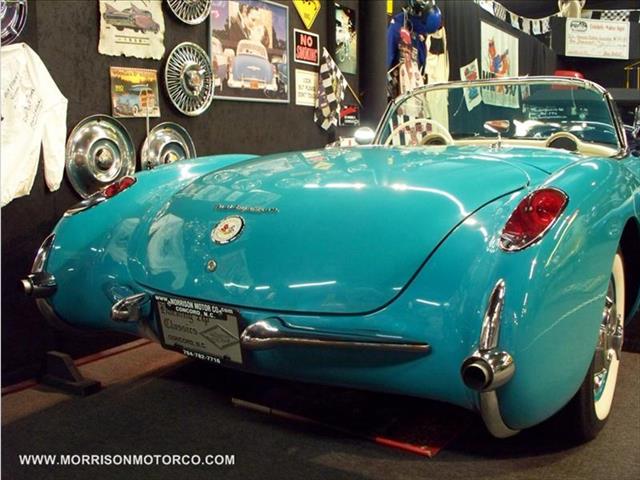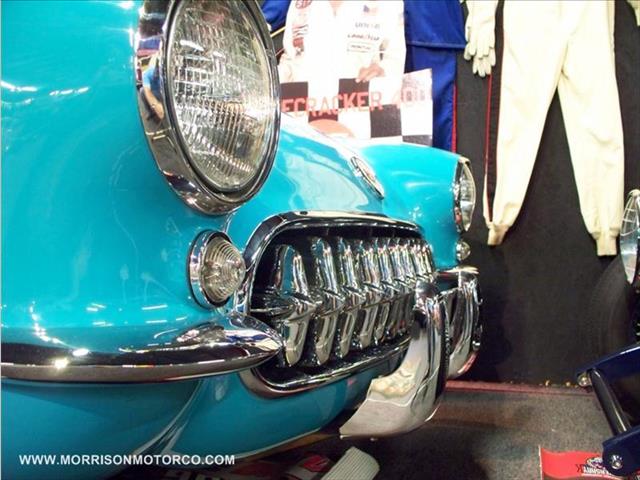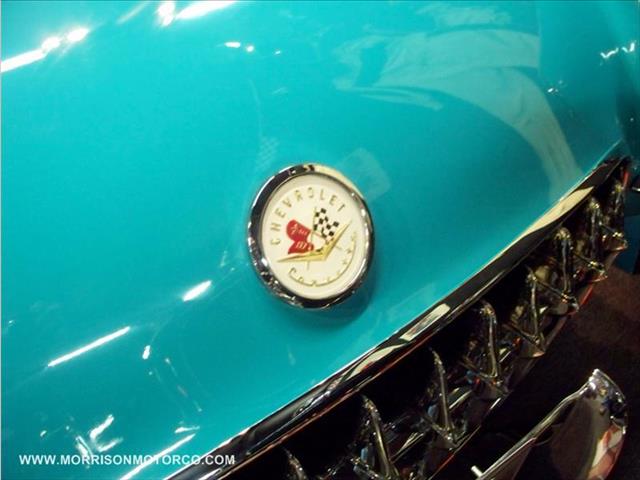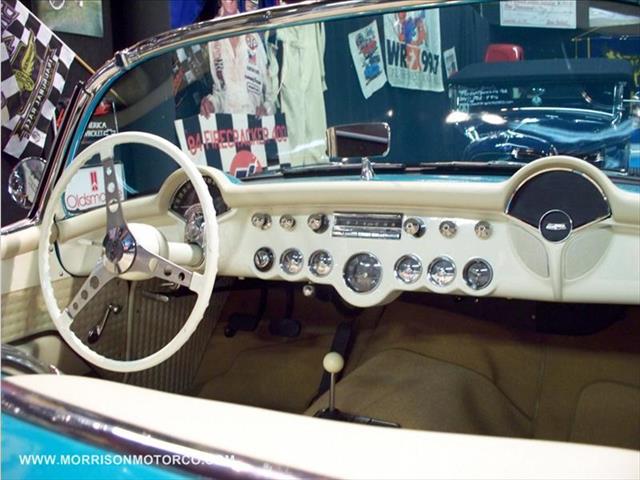
At that time it was still what engineers call a "breadboard layout"-a combination of units that work properly, but aren't fully developed and integrated into one mechanism. It's still very much that way. Moreover, the Rochester engineers are very competent carburetor designers, but didn't have nearly enough time to adapt their techniques to the wholly different problems of injection. In spite of the fact that the new arrival had long been expected, its arrival was not without complications.

The above are facts, but in spite of them the Chevy "Ramjet" constant-flow injector works very well indeed. The big question, of course, is: How does it stack up against carbs? To find out, we set up a full transcontinental '57 Corvette road test, involving our entire testing staff. On the West Coast an injected machine was obtained from the factory representatives, while on the East Coast a dual-quad version was provided by Alvin Schwartz Chevrolet and Shelly Spindel, of Brooklyn.

As a result we have a lot of the answers, but not all, the doubt being due to slight variations between the cars tested, the injected car, with the hardtop alone, weighed 120 pounds less than the carbed machine, which was toting the more complex soft top mechanism. Also, rear end ratios were 3.70 with the injector and 3.55 with the carbs. Advantage is taken of the better fuel distribution of FI by upping the compression ratio to 10.5/1, while the standard car had 9.5/1. This is a logical follow-up step, and does not "favor" the injection so far as our tests are concerned. The same can't be said of the weight and rear end discrepancies, which would tend to help the FI car at the bottom end, though very slightly.

Starting the dual-quad car was easy, by twisting the ignition switch, though some care was needed to avoid flooding on hot starts. Once warmed up, the idle was low enough at 500 rpm, but it was full of lumps and shook the car bodily. This can be handed to the competition cam, which was installed in both cars and checks out as seen in the above sidebar.

The power from this cam comes on strongly at about 2700 rpm and stays that way until about 5300, after which it falls off rapidly, apparently due to valve gear. At the end of a fast run, the idle was extremely bad, and after each stop in the braking test the carbs would stall the engine dead. The dual-quad setup is by now a familiar one, so rigged that the rear carb runs all the time and the front one cuts in only at about 2/3 throttle.

The engine was cold when we first twisted the switch on the Ramjet Corvette, but the engine caught on the first spin, bursting into a wholesome clatter of solid tappets jingling at a warmup idle at 1400 rpm. We raised the hood and studied the injection system. It looked purposeful but very different from the racing-type setups we know best...at present. A tiny copper tube, about the diameter of a pencil lead, runs from the pump to each of the nozzles which are located on the manifold at each of the intake ports. The tubes look fragile. We looked with distrust on solenoids, diaphragms, flex-cable drive, and complex linkages each of which might be a point of failure.

During the runs with the injected car, we were looking mainly for flat spots--the transition points in fuel/air metering that are often among the defects of the carb-fed, rather than injected, engine. There were none. The beef in the FI engine permits you to take off from standstill in top gear just by revving up to 1500 or so and letting the clutch out slowly. Our zero to 60 (actual) time in top gear alone was 13.8 seconds. Then we lugged the engine down to its smooth-running minimum in top gear, 14 mph, and accelerated using both full and partial throttle openings. There was no faltering, there were no flat spots. Power was generated smoothly and at an increasing rate until about 2800 rpm when the cam hit its stride and the car hunkered down and steamed into the distance. Elapsed time for 14 to 60 mph in high was 12.3 seconds, on the injected machine.

The same continuous flow of power held good during hard cornering and braking. Under these conditions with the dual-quad car, the contents of the carb float bowls were slung away from their intended orifices and left the engine gasping for fuel. There was no trace of this with the FI Chev, which feels as though it could be driven upside down.
In all the recent prophecies concerning FI, we've been assured that fuel economy will be improved. In SCI's tests, the FI version registered as much as 15 percent better gas mileage--in spite of a lower gear ratio. Part of this gain is due to the FI job's 10.5 compression ratio. In spite of the high compression our test car's engine did not detonate even when lugging heavily in top gear.
In the U.S. far more interest is shown in cars' sheer performance than in their fuel economy and we therefore normally restrict our fuel consumption figures to averages obtained in overall running. But because of the novelty of FI and because of the fuel consumption claims made for it, we ran precise fuel checks at steady speeds, using a Donat Gauthier 1/10-gallon fuel-measuring burette. The surprisingly good results for so potent an engine are shown in the data table. They suggest the fuel economy that's possible if you should choose to drive one of these injected cars sedately...which is not the kind of use they're built for. More important, they indicate the improved operating economy that can be expected when FI does become sufficiently inexpensive to be fitted to normal touring cars.

To get more expert opinion than our own on Chev's FI, we turned our test car over to racing FI specialist Stuart Hilborn, asking that he drive it and give frank comment. This was Hilborn's first behind-the-wheel encounter with Chev FI and he gave the car a careful, critical workout. Then he said, "It's good. All I can find to criticize is its hot-start behavior and its complexity."

As an addendum to the performance figures obtained, and to the comparison curve from our '56 Corvette test, we might mention the net horsepower ratings of the two 1957 cars tested--in other words, the actual output at the clutch with all accessory leads subtracted. The injected engine delivers 240 bhp at 5600 rpm, while the dual-quad rig turns up 230 bhp at 6000. Last year's Corvette engine was very modestly rated at 225 horses, so the improvement this year is just what you'd expect from an added 18 cubic inches.





0 nhận xét:
Đăng nhận xét